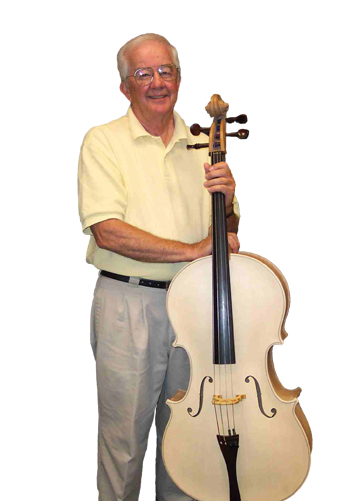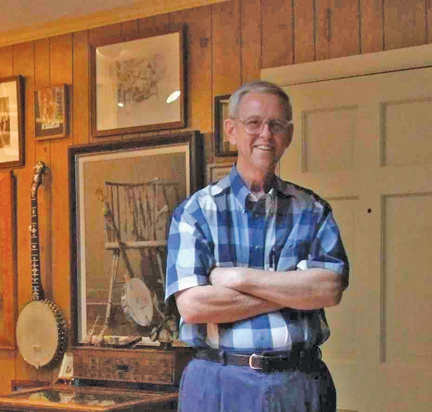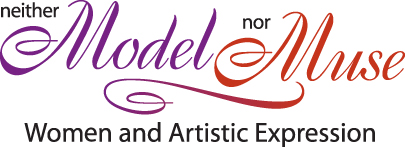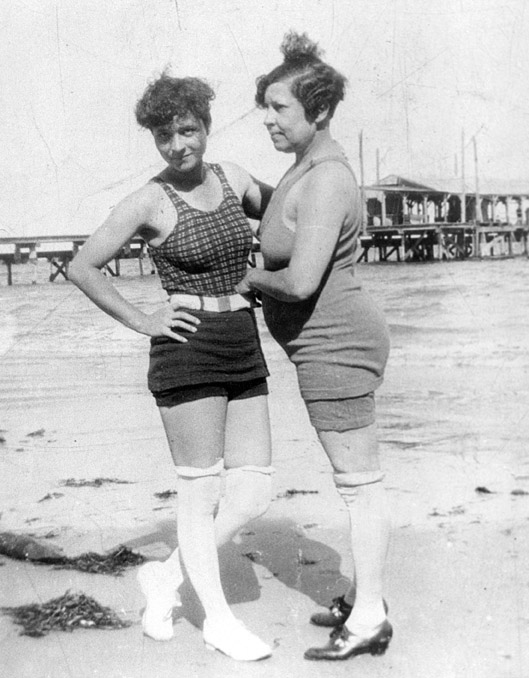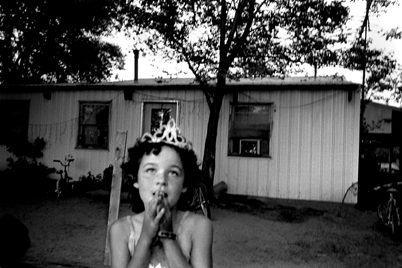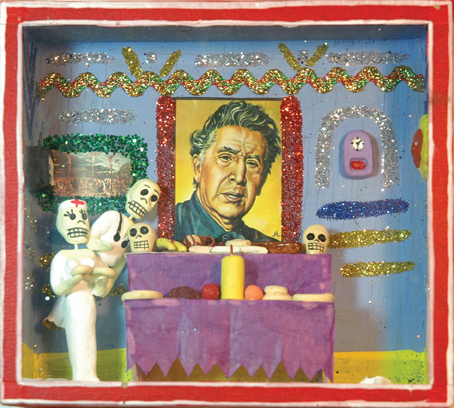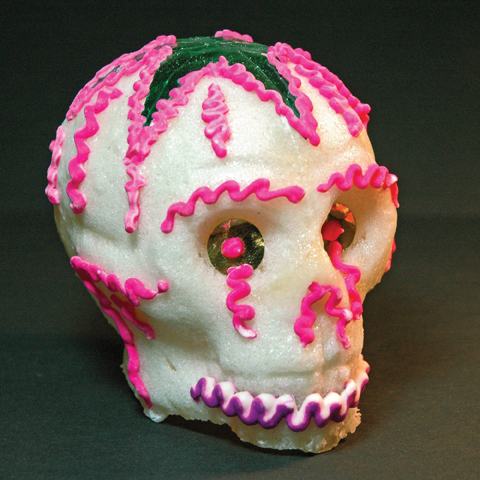Deborah Jakubs
The backbone of South America, the magnificent Andes mountain range, dramatically separates Chile and Argentina. Flying over the Andes is a stunning experience that inevitably evokes thoughts of Alive, the book and film about the true story of the tragic 1972 crash of the plane carrying the Uruguayan rugby team.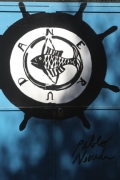 Crossing the range via water, or “sailing the Andes,” is equally memorable, from an entirely different perspective. In March 2007, a group of Duke alumni and friends, ranging in age from 18 to 82, did just that, as part of a trip sponsored by Duke Alumni Education and Travel, a division of the Alumni Association (DAA). I had the great pleasure and privilege of serving as the “Faculty Lecturer” for this twelve-day, four-stop adventure, Chile and Argentina, with an Andean Lake Crossing.
Crossing the range via water, or “sailing the Andes,” is equally memorable, from an entirely different perspective. In March 2007, a group of Duke alumni and friends, ranging in age from 18 to 82, did just that, as part of a trip sponsored by Duke Alumni Education and Travel, a division of the Alumni Association (DAA). I had the great pleasure and privilege of serving as the “Faculty Lecturer” for this twelve-day, four-stop adventure, Chile and Argentina, with an Andean Lake Crossing.
The colorful, inviting brochures from Duke Alumni Education and Travel arrive periodically in our mail, and my husband, Jim Roberts (MBA ’85, P ’05), and I have fantasized about those tempting trips to exotic locales. Friends on the faculty at Duke have shared their experiences as Duke ambassadors on such adventures. I have been curious. I have been envious. As a former “Navy brat,” raised in no one particular place, I suffer (gladly!) from wanderlust. So when Rachel Davies, director of Alumni Education and Travel, inquired about my interest and availability for this trip, I barely took a breath before signing on the dotted line.
One role of the Duke host is to offer scholarly presentations on relevant topics during the trip. My background in Latin American history, with a focus on Argentina, made this assignment particularly appealing.  I developed a deep and abiding affection for Buenos Aires during the extended period I lived there while researching the social history of British immigrants and the development of their community during the 19th century for my Ph.D. dissertation. I try hard to return at least once a year to “BA,” one of the world’s greatest cities. Maybe it is nostalgia absorbed from all the tangos I have listened to over the years, but I feel reconnected with a part of my true self when I am in Buenos Aires.
I developed a deep and abiding affection for Buenos Aires during the extended period I lived there while researching the social history of British immigrants and the development of their community during the 19th century for my Ph.D. dissertation. I try hard to return at least once a year to “BA,” one of the world’s greatest cities. Maybe it is nostalgia absorbed from all the tangos I have listened to over the years, but I feel reconnected with a part of my true self when I am in Buenos Aires.
While living in Argentina, I traveled to many parts of the country, but never to Patagonia, which made this Duke trip even more appealing. An added attraction was that “El Grupo Duke” (pronounced “DU-que”), as we came to be known, included several present and past members of the Library Advisory Board, our most loyal and generous supporters and advocates, as well as many new friends. We were a remarkably compatible group of eighteen, and by the end of our twelve days together we were genuinely sorry to have to go our separate ways.
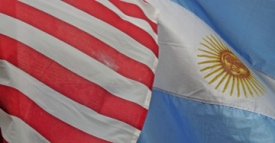 Our adventure began in our respective departure cities as, two by two, we gradually met up with fellow travelers. Many of us became acquainted in the airport lounge in Miami, after spotting the tell-tale orange luggage tags supplied by the Duke Alumni Association and introducing ourselves before boarding the overnight flight to Santiago. There, at the airport in the early morning, we travelers converged as our flights arrived in close succession. We were met by Pedro Porqueras, our fantastic tour director, who would accompany us on the entire trip, taking care of every possible logistical detail, and Rodrigo, our local tour guide for the city of Santiago. The logistics for our trip were handled seamlessly, making it easy for us to relax and enjoy ourselves. The eight-hour overnight flight was long, but because it was north-to-south, with only one time-zone change, the jet lag was minimal and we spent a good part of the day sightseeing. At that evening’s welcome dinner at our hotel, we enjoyed superb Chilean seafood and began serious bonding as, in turn, we introduced ourselves and shared our reasons for being there. The conviviality of that evening characterized the rest of the trip.
Our adventure began in our respective departure cities as, two by two, we gradually met up with fellow travelers. Many of us became acquainted in the airport lounge in Miami, after spotting the tell-tale orange luggage tags supplied by the Duke Alumni Association and introducing ourselves before boarding the overnight flight to Santiago. There, at the airport in the early morning, we travelers converged as our flights arrived in close succession. We were met by Pedro Porqueras, our fantastic tour director, who would accompany us on the entire trip, taking care of every possible logistical detail, and Rodrigo, our local tour guide for the city of Santiago. The logistics for our trip were handled seamlessly, making it easy for us to relax and enjoy ourselves. The eight-hour overnight flight was long, but because it was north-to-south, with only one time-zone change, the jet lag was minimal and we spent a good part of the day sightseeing. At that evening’s welcome dinner at our hotel, we enjoyed superb Chilean seafood and began serious bonding as, in turn, we introduced ourselves and shared our reasons for being there. The conviviality of that evening characterized the rest of the trip.
We toured the lovely city of Santiago, visited La Moneda, the presidential palace where President Salvador Allende lost his life in the military coup of 1973 (the other September 11), the Palacio Cousiño, a 19th century mansion, the pre-Columbian museum, the Santa Rita Winery, and La Chascona, one of Nobel Prize-winning writer Pablo Neruda’s houses, with its unique design and whimsical touches. On our third day, we flew two hours south to the busy fishing port of Puerto Montt, where we met Marcel, our highly entertaining local guide for the south of Chile, an avid fan of Edgar Allan Poe!
He and Pedro took us to the local outdoor fish and produce market, where they spontaneously created a scavenger hunt: they assigned us to small groups, armed each with a five-peso note and a slip of paper bearing the name of a different item the group was to locate at the market, and gave us limited time in which to complete our quest, return to the group, and share our discoveries. One group’s “catch” was a very large piece of kelp; my partners and I found a choro maltén, a local clam; another group displayed its bag of merquén, a spice common to the region – and so on. The whole experience was both enlightening and entertaining. By the time we boarded the bus for Puerto Varas, our next stop, we were becoming fast friends.
My presentation to the group that evening, on the political, economic, and social history of Chile and Argentina, stimulated a lively discussion that created even more connections among group members.  Chile, one of the oldest democracies in America, has nevertheless experienced dark times, most recently the 1973-1989 period of military rule. Opinion is still sharply divided on the legacy of General Augusto Pinochet. Chile’s current president, Michele Bachelet, a pediatrician, epidemiologist, and torture survivor, is the first woman president of the country. She succeeded Ricardo Lagos, who earned his Ph.D. in economics at Duke University. Chile boasts two Nobel laureates in literature, Gabriela Mistral (the first woman to be given this honor, in 1945), and Pablo Neruda. Another well-known naturalized Chilean writer (born in Argentina) is Duke’s own Ariel Dorfman, author of Death and the Maiden and many works of poetry, prose, and essays, and a popular professor. Argentina, a country richly endowed with natural resources of all kinds and populated largely by European immigrants, has endured economic crises and political upheaval, due in part to the powerful legacy of peronismo. Juan Domingo Perón and his wife Evita, now a cult figure who is either beloved or deeply resented, set the country’s course in the mid-twentieth century. The “Dirty War” and tragic years of military dictatorship (1976-83), during which thousands of people were “disappeared,” was a dark chapter from which Argentina is now emerging.
Chile, one of the oldest democracies in America, has nevertheless experienced dark times, most recently the 1973-1989 period of military rule. Opinion is still sharply divided on the legacy of General Augusto Pinochet. Chile’s current president, Michele Bachelet, a pediatrician, epidemiologist, and torture survivor, is the first woman president of the country. She succeeded Ricardo Lagos, who earned his Ph.D. in economics at Duke University. Chile boasts two Nobel laureates in literature, Gabriela Mistral (the first woman to be given this honor, in 1945), and Pablo Neruda. Another well-known naturalized Chilean writer (born in Argentina) is Duke’s own Ariel Dorfman, author of Death and the Maiden and many works of poetry, prose, and essays, and a popular professor. Argentina, a country richly endowed with natural resources of all kinds and populated largely by European immigrants, has endured economic crises and political upheaval, due in part to the powerful legacy of peronismo. Juan Domingo Perón and his wife Evita, now a cult figure who is either beloved or deeply resented, set the country’s course in the mid-twentieth century. The “Dirty War” and tragic years of military dictatorship (1976-83), during which thousands of people were “disappeared,” was a dark chapter from which Argentina is now emerging.
Our two days and nights in Chile’s Lake District, on the shore of Lago Llanquihue (yan-KEE-way), were filled with fascinating sightseeing and breathtaking scenery, including snow-capped volcanoes Osorno and Calbuco just across the lake from our hotel.  We lunched at the German Club and visited Frutillar, site of the Museum of German Colonization, with its educational exhibits displaying the way of life of immigrants to the region in the 1800s. Marcel served up rich historical detail to us on the bus as we moved from place to place, passing a salmon farm, notable Bavarian-style architecture, and more stunning scenery. El Grupo Duke took advantage of the “photo ops” along the way.
We lunched at the German Club and visited Frutillar, site of the Museum of German Colonization, with its educational exhibits displaying the way of life of immigrants to the region in the 1800s. Marcel served up rich historical detail to us on the bus as we moved from place to place, passing a salmon farm, notable Bavarian-style architecture, and more stunning scenery. El Grupo Duke took advantage of the “photo ops” along the way.
We awoke on the fifth morning in Chile with great anticipation: it was the day we would “sail the Andes.” On the way we visited Petrohué Falls, with its unusual volcanic rock formations and emerald-green waterfalls. We crossed Lago Todos los Santos via catamaran and, after lunch in Peulla, boarded another ferry for the crossing of Lago Frias and Lago Nahuel Huapi. From the deck of the boat one of our Grupo fed the gulls as they swooped down to take pieces of bread from his hand. The weather was perfect, and we had striking views of the spectacular scenery. It is impossible to capture in words the lake region’s breathtaking beauty and peace, which became even more evident as we arrived at our next stop, the Hotel Llao Llao, on the Argentine side of the Andes, in San Carlos de Bariloche. There we met Elizabeth, also known as “Mausi” (a family nickname), our delightful and very knowledgeable local guide.
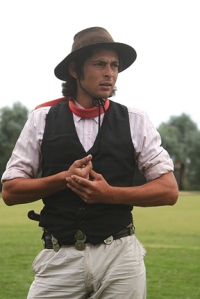 Bariloche, the gateway to Argentine Patagonia, is an elegant Swiss-style city, known for its fine chocolate, shopping, ski resorts, exceptional natural beauty and outdoor recreation. St. Bernard dogs are the city’s mascots, hanging out with their owners (and available for photos) on city plazas and at scenic spots. Mausi and Pedro accompanied us to the Cerro Campanario, where we rode the chair lifts up to the very top of the mountain for a spectacular view of the many lakes and fjords that characterize the region. The Hotel Llao Llao (pronounced “zhao-zhao”), which once served as the park lodge, overlooks the Nahuel Huapi National Park, the first national park in South America, created in 1934. The hotel’s name derives, as do many terms in the region, from the Mapuche language and translates roughly as “very good.” Because the language contains no word for “very,” repeating a word adds that emphasis. To El Grupo Duke, it was so lovely that it might have been “Llao Llao Llao,” a place to which we all plan to return. But Buenos Aires beckoned, so we bade farewell to Patagonia.
Bariloche, the gateway to Argentine Patagonia, is an elegant Swiss-style city, known for its fine chocolate, shopping, ski resorts, exceptional natural beauty and outdoor recreation. St. Bernard dogs are the city’s mascots, hanging out with their owners (and available for photos) on city plazas and at scenic spots. Mausi and Pedro accompanied us to the Cerro Campanario, where we rode the chair lifts up to the very top of the mountain for a spectacular view of the many lakes and fjords that characterize the region. The Hotel Llao Llao (pronounced “zhao-zhao”), which once served as the park lodge, overlooks the Nahuel Huapi National Park, the first national park in South America, created in 1934. The hotel’s name derives, as do many terms in the region, from the Mapuche language and translates roughly as “very good.” Because the language contains no word for “very,” repeating a word adds that emphasis. To El Grupo Duke, it was so lovely that it might have been “Llao Llao Llao,” a place to which we all plan to return. But Buenos Aires beckoned, so we bade farewell to Patagonia.
We made the most of our four days in Buenos Aires, thanks to Pedro, himself a porteño (as natives of the port city of BA are known). His encyclopedic knowledge of history, economics, sports, politics, flora and fauna enriched our experience tremendously. We stayed in the fashionable Recoleta neighborhood, and visited the Recoleta Cemetery, a veritable “city of the dead” with its ornate mausoleums, the resting place of Argentine elites, national heroes, writers and poets, as well as Evita Perón herself. Our city tour took us to the Casa Rosada, presidential palace, the National Cathedral, the San Telmo antiques market, and La Boca neighborhood, birthplace of tango and home during the 19th and early 20th centuries to the waves of Italian, French, and Spanish immigrants who populated the port, a time when three-quarters of the adult male population of the city was foreign-born. That stroll back in time, and my presentation on the evolution and social history of tango, along with musical illustrations, whetted our appetite for the tango show that had us riveted one evening. The dancers were superb, and the host, a Carlos Gardel impersonator, was uncanny in his resemblance to the late legendary tango singer.
 Our all-day excursion to an estancia on the pampas, El Rosario de Areco, gave the group the chance to consume a multi-course, typical asado or barbecue as well as to see a demonstration of the skills on horseback of the gauchos who work on the ranch. In addition to its delectable beef and fine wines and, of course, tango, Argentina is well known for the superior quality of its polo players and polo ponies, a focus of El Rosario de Areco and our gracious hosts there, Pancho and Florencia Guevara. Three of their nine children are professional polo players, in England! That evening, back at our hotel in Buenos Aires, El Grupo Duke hosted a reception for alumni and friends of Duke, members of the Duke Club of Argentina. It was the first time a DAA trip and a local alumni event had been combined and seems to have been a great success, attended by 30-40 new Duke friends, many of whom had also been at an event hosted by Duke’s former president Nan Keohane on her 2001 trip to Argentina, Chile and Brazil to meet friends of Duke, a trip I was fortunate to have been on as well.
Our all-day excursion to an estancia on the pampas, El Rosario de Areco, gave the group the chance to consume a multi-course, typical asado or barbecue as well as to see a demonstration of the skills on horseback of the gauchos who work on the ranch. In addition to its delectable beef and fine wines and, of course, tango, Argentina is well known for the superior quality of its polo players and polo ponies, a focus of El Rosario de Areco and our gracious hosts there, Pancho and Florencia Guevara. Three of their nine children are professional polo players, in England! That evening, back at our hotel in Buenos Aires, El Grupo Duke hosted a reception for alumni and friends of Duke, members of the Duke Club of Argentina. It was the first time a DAA trip and a local alumni event had been combined and seems to have been a great success, attended by 30-40 new Duke friends, many of whom had also been at an event hosted by Duke’s former president Nan Keohane on her 2001 trip to Argentina, Chile and Brazil to meet friends of Duke, a trip I was fortunate to have been on as well.
On our final evening in BA, before we all went out for the typical post-10 p.m. dinner of tender beef or exquisite pasta, my husband Jim gave a lecture on the history of the wine cultures of Chile and Argentina, illustrated with a wine tasting. Jim is Duke’s executive vice provost for finance and administration and, as an adjunct professor in the History Department, teaches about the social history of alcohol from a comparative perspective. The program was a fitting end to our gastronomic and oenophilic adventures, as we reluctantly anticipated our return to the United States.
A trip such as this, in which strangers come together for nearly two weeks of close companionship, united at first solely by their desire to visit and learn about another part of the world, can be a hit-or-miss experience. As our trip drew to a close, I felt very fortunate to have shared these good times with such warm, witty, smart and adventurous people, whom I now count among my friends. Because of our common Duke connection, I know there is a good chance I will see them again. In the meantime, we will carry our memories with us, and look forward to El Grupo Duke: The Sequel!
 Deborah Jakubs is Rita DiGiallonardo Holloway University Librarian, Vice Provost for Library Affairs and Adjunct Associate Professor of History at Duke University. She is pictured with her husband, Jim Roberts.
Deborah Jakubs is Rita DiGiallonardo Holloway University Librarian, Vice Provost for Library Affairs and Adjunct Associate Professor of History at Duke University. She is pictured with her husband, Jim Roberts.
Get More about Chile and Argentina
- Bruce Chatwin. In Patagonia. New York: Summit Books, 1977.
- Simon Collier and María Susana Azzi. Le Grand Tango: The Life and Music of Astor Piazzolla. Oxford, New York: Oxford University Press, 2000.
- Simon Collier and William Sater. A History of Chile 1808-2002. Cambridge, New York: Cambridge University Press, 2004.
- Simon Collier, Artemis Cooper, María Susana Azzi and Richard Martin. Tango! The Dance, the Song, the Story. New York: Thames and Hudson, 1995.
- Pamela Constable and Arturo Valenzuela. A Nation of Enemies: Chile under Pinochet. New York: W. W. Norton, 1991.
- Ariel Dorfman. Heading South, Looking North: A Bilingual Journey. New York: Farrar, Straus, and Giroux, 1998.
- Adam Feinstein. Pablo Neruda: A Passion for Life. New York: Bloomsbury, 2004.
- Nicholas Fraser and Marysa Navarro. Evita: The Real Life of Eva Perón. New York: W. W. Norton, 1980, with a new introduction, 1996.
- Alma Guillermoprieto. Looking for History: Dispatches from Latin America. New York: Pantheon Books, c2001.
- Tomás Eloy Martínez. Santa Evita. New York: Knopf, 1996.
- Tomás Eloy Martínez. The Tango Singer: A Novel. New York: Bloomsbury, 2006.
- Gabriela Nouzeilles and Graciela Montaldo, eds. The Argentina Reader: History, Culture, Politics. Durham, NC: Duke University Press, 2002.
- Robert Farris Thompson. Tango: The Art History of Love. New York: Pantheon, 2005.
credit: Photos by Jim Roberts and Pedro Porqueras
From childhood, James Arthur Wood Jr. collected original cartoon art and then became an editorial cartoonist himself. He eventually donated his collection of over 36,000 original cartoon drawings to the Library of Congress. From that collection, 102 drawings reflecting Wood’s primary interests, including political illustrations, animation, and comic strips, have been chosen for this online exhibition. Among the many gems is a very fine crayon and ink political cartoon by Bill Maudlin that depicts Nikita Khrushchev berating a group of artists.
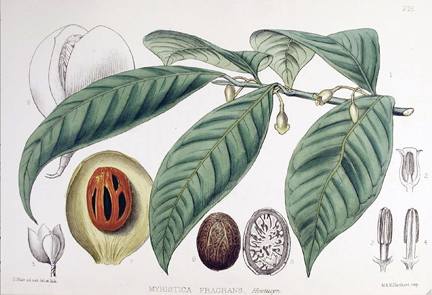 Since the first known use of spices 7,000 years ago in the Middle East, they have been employed for embalming, as ingredients in incense, as aphrodisiacs and medicine, and as flavorings for food. This informative Web site, created by the History and Special Collections Section of the Louise M. Darling Biomedical Library at UCLA, offers general facts about spices, including their sources and various uses, and a timeline. In addition, a separate page for each spice gives more details and a photograph of the processed and unprocessed form of the spice as well as a colored drawing of the plant and its parts from Bentley’s Medicinal Plants.
Since the first known use of spices 7,000 years ago in the Middle East, they have been employed for embalming, as ingredients in incense, as aphrodisiacs and medicine, and as flavorings for food. This informative Web site, created by the History and Special Collections Section of the Louise M. Darling Biomedical Library at UCLA, offers general facts about spices, including their sources and various uses, and a timeline. In addition, a separate page for each spice gives more details and a photograph of the processed and unprocessed form of the spice as well as a colored drawing of the plant and its parts from Bentley’s Medicinal Plants.

